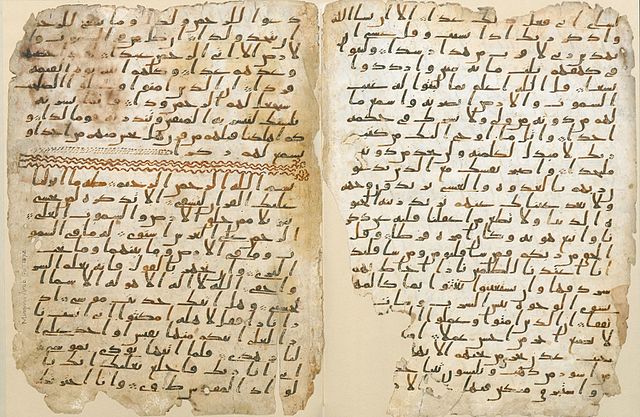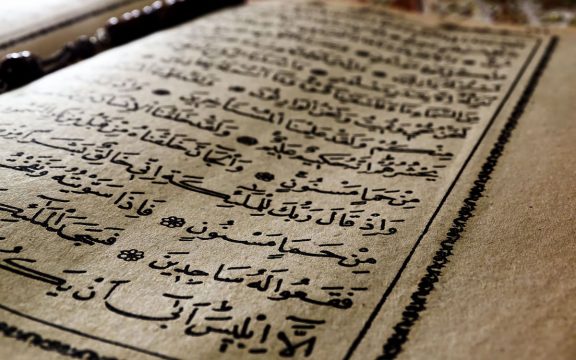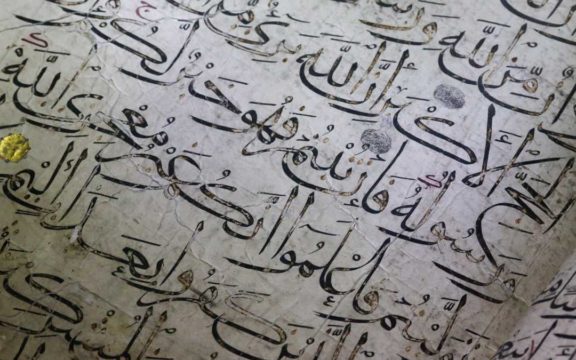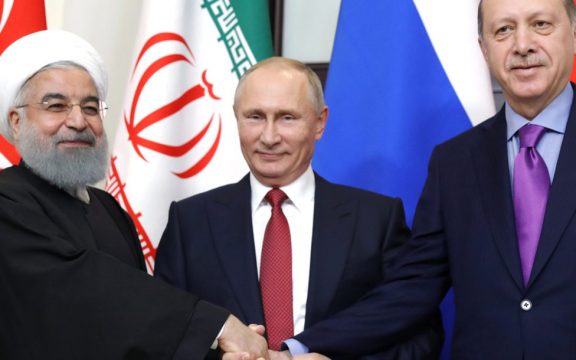The Qur’anic Manuscript
There is no doubt that Qur’an has manuscripts from the first century of hijra. Nabia Abbot, in her work The Rise of the North Arabic Script and its Kuranic Development, with A Full Description of the Kur’an Manuscript in the Oriental Institute (1939),showed many fragments of Qur’anic manuscripts. The UNESCO also had compiled a CD that contains some of Sana’a manuscripts. In this CD, many Qur’anic Manuscripts are written in the hijazi script that are dated from the first dan the second century of hijra.
Many examples of the Qur’anic manuscripts have been presented by scholars. The first is the ‘Uthmanic Manuscripts. The history is directly related to the narrative that the Caliph ‘Uthman ordered some companions to copy and send it o ut to different places. Some of the manuscripts are in Uzbekistan, Turkey, and Egypt. The second is the Qur’anic manuscripts attributed to Ali ibn Abi Talib. The Ali manuscripts were written in Kufi script with 275 folios that 86% is the text of the Qur’an.
The third is the Qur’anic manuscripts from the first century of hijra, around Umayyad period. There were more than 24 manuscripts written in both Kufic and Hijazi in this period. The fourth is the manuscripts from the second century. There are more than 14 manuscripts that can be found in several Museums or Libraries such as Egypt National Library, the Austrian National Museum. Many more of Qur’anic manuscripts cannot be explained at a time.
Manuscripts in their Historical Context
In every single manuscript contains at least both knowledge and information. Since the earliest knowledge and Qur’anic transmission in early Islamic world was mostly by oral, a part of the importance of Islamic manuscripts was that they were as one of the tools in the transmission of knowledge too. Many informations and knowledges, during the first and second century of Islam, were transmitted with manuscripts.
Many reasons why their works (manuscripts) vastly spread in the Islamic world. The growth of Islamic teaching discourse also encouraged scholars to write some works. Many prominent scholars travelled long distance to pursue some knowledge, writing what they had studied and keeping it to transmit again to their disciples. Spreading of Islam to wider regions needed a media to transfer Islamic teaching. For example, many people who wanted to study hadith had to receive it from narrator who possessed a special isnad (authoritative knowledge transmission). Hence, they produced a great number of hand-written works in various disciplines.
Of transmission, both knowledge and information in Islamic history, many methods were applied. There are some types of knowledge transmission that can be found by studying manuscripts for instance ijaza (a license authorizing its holder to transmit a certain text or subject, which is issued by someone already possessing such authority) and sama’ (transmission through recitation and listening). Scribes wrote their travel, teachers, what they had learned, the work’s name, the student’s name, and many more on. Manuscripts had therefore played a significant role in many aspects.
Studying Qur’anic Manuscripts
What can we learn about Qur’anic manuscripts? Muhammad Isa Waley said that “without making a thorough study of the manuscript tradition and the evidence it contains, we cannot trace in full the routes and the individuals through which knowledge was disseminated in the traditional world of Islam”. So, the study of manuscript is basically about providing evidence and to know more about history.
Of studying Qur’anic manuscripts, according to Francois Deroche, paleography and codicology are crucial in the study of the early copies of the Qur’an. It is caused by that many earliest manuscripts do not provide direct evidence about their age. Codicology contribute to understand of the material. On the other hand, paleography which is the study of ancient writing systems and the dechipering and dating of historical manuscript can rely on the textual evidence that was provided by al-Nadhim’s description of the script of Mecca as a starting point to analize the manuscripts.
The Qur’an printed in modern era tend to reproduce the features of “classical” Qur’an. Before “classical” edition, the Qur’anic manuscripts underwent many “changes” and improvization, but there is no contradictory among earliest Qur’an manuscripts and fragments and the information provided by Islamic sources about the “official edition” by Caliph ‘Uthman. In early Abbasid period, a major improvement of hand-written Qur’an was the introduction of vowels. These are indicated through the positioning of red dots with respect to the consonant: an “a” –fatha—above the letter, an “i” –kasra— below it or a “u” –damma—after it, and tanwin is noted by double dot, all of which do not exist in the previous era and is obviously different from our time.
These are only few examples on how Qur’anic manuscripts are improved. To know specifically as above, many scholars nowadays try to dig deeper and to find more information about the history of Qur’an. This study is not only about evidence but also about how mushaf was developed by classical and medieval scholars and how great scholars tried to help societies in order to read and understand to the Qur’an by making various innovations. This shows that the study of manuscripts will shed a light to our history. Likewise, fruitful discussion of Qur’anic manuscript will produce a new perspective leading to new discourse of the history of the Qur’an.
![Islami[dot]co](https://en.islami.co/wp-content/themes/jambualas/images/logo.png)







